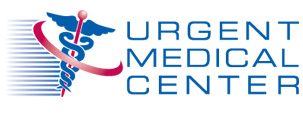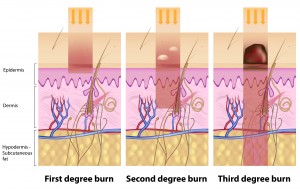Different Types Of Burns: When To Seek Medical Attention For Your Burn
People are commonly burned at work and at home. Thankfully, according to the American Burn Association, if you are burned you have a 96% chance of survival. The most common types of burns are less severe and result from things like touching a hot stove or iron. Depending on where you work you might be more likely to suffer from a burn, say for instance if you work with hot machinery. Thermal burns are the most common type, this is when your skin touches something that is hot, like metal, boiling water, or fire. People receive thermal burns for a number of reasons including matches, auto accidents, or an electrical malfunction. According to government statistics, 69% of burn victims are male and only 31% are female (See full fact sheet). No matter who you are or what your day-to-day life includes, getting burned is always a possibility. The severity of burns people get range greatly, from something you can treat at home, to something that requires major life-saving surgery. Knowing what to do after your skin is burned is important in order to start healing the wound immediately, instead of making it worse. Here we explain how you can identify which type of burn you have, and when you should seek medical attention for your burn.
Different Types of Burns
First-degree burn: This is the shallowest burn. Damage only penetrates through the top outer layer of your epidermis. This will cause your skin to swell, hurt, and appear red.
Second-degree burn: This type of burn goes through and damages the top layer of skin and also the layer of skin just beneath. This is when blistering can occur, along with redness, swelling, and pain.
Third-degree burn: The most severe type of burn. With a third degree burn all layers of skin are burned, and so are tissues beneath the skin. If skin appears white, blackened, or charred you likely have a third degree burn. There may be no immediate pain, and instead you may feel numb.
What Symptoms Are Associated With Skin Burns?
Some burns are very painful; others include no pain at all. It really depends which layer of the skin has been affected.
Some common symptoms that burn victims experience include:
- Skin is peeling
- Skin appears puffy or swollen
- Skin is very red
Going into aftershock can occur, and can include pale skin, fainting, and incoherence
Burnt Airways
If a fire is associated with your burn there is the risk of inhaling smoke or steam and burning your airways.
Symptoms of airway burns include:
- Change in voice
- Charred lips
- Inability to properly breath, wheezing
- Singed facial hair
- Spiting up dark mucus
What To Do For A Major Burn
Some people are not sure if they have a major burn or not. Some signs that a burn is considered ‘major’ includes:
- The burnt area has a larger surface size than the palm of your hand
- Chemicals or electricity has caused the burn
- Person with the burn appears to be in shock
For major burns you will want to call 911 immediately. Major burns often include a fire, car accident or some other calamity where the police might be needed anyways. Major burns are likely if someone is completely caught on fire, in which case they need to stop, drop, and roll. You will also want to smother the flames by throwing a wool or cotton blanket over their body. This will starve the fire so that it is forced to go out. Immediately douse the person with water.
Never remove clothing that rests against burned skin, although if possible you do want to remove anything that is still smoldering. Next, make sure the person is breathing, and give them CPR if necessary. A clean bandage can be applied to the wound to protect it. Try and hold the burnt part of the body above the heart to help the body better react to the trauma. While waiting for medical personal to arrive, do not create any pressure on the burned skin.
What To Do For Less Severe Burns
For less severe burns you might be able to treat yourself at home. If your skin is burnt but unbroken, run cool water over the area for at least 5 minutes, just don’t use ice water. Clean towels or bandages applied over the burn can also help relieve some of the discomfort. You can take medicine to help relieve some of the swelling and pain, such as ibuprofen or acetaminophen. Children under 12 should not have Aspirin.
You can help your wound heal better by properly cleaning and taking care of it. The number one thing you want to avoid with any burn is infection, and sometimes a topical antibiotic is necessary. Being up to date on tetanus vaccinations is also helpful in preventing further complications associated with a burn. When properly treated, minor burns usually heal well without complications. If any of the following symptoms arise, you will want to get medical attention right away.
Signs your minor burn requires medical treatment:
- The pain continues 24-48 hours after you received the burn
- The pain continues to get worse and begins to increase in swelling, redness, etc.
- If you have puss oozing from any blisters
- If you see red streaks spreading from the burn





